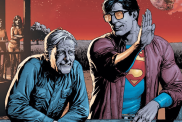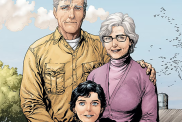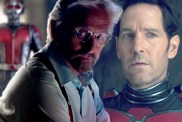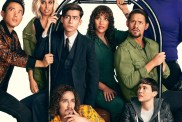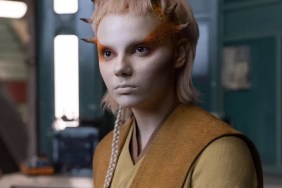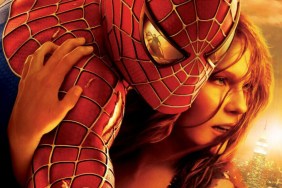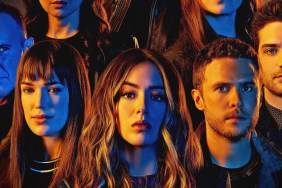“Agent Carter” begins with the final scene of Captain America: The First Avenger as Peggy says goodbye to Chris Evans’ Steve Rogers. Jumping ahead a year, we find Peggy working in a government office and none too pleased with her lot in life. She’s the victim of gender politics of the day and, despite being an agent, winds up primarily doing glorified secretary work. That all changes one night, however, when she takes matters into her own hands and takes on a middle-of-the-night mission.
In the below conversation (which includes a few guest appearances by “Agent Carter” EP Brad Winderbaum), D’Esposito discusses how One-Shots make it from inception to the screen, placing a female character front and center and his desire to potentially direct a Marvel feature film one day.
Please be aware, D’Esposito’s comments do contain some spoilers for “Agent Carter”
CS: You’ve been a part of the Marvel Cinematic Universe since the beginning, but what has changed for you since you began directing the One-Shots?
Louis D’Esposito: I think you get a little more confident each time you do one. That doesn’t mean that you don’t still come in and have butterflies in your stomach. I also knew after doing the first one that I could push what I could get away with. This was always a big story. It required a little more money and little more time to shoot. How far could we push it? What could we get on-screen? You start learning that. I think that, at first, we were a little bit gun shy, thinking we couldn’t do so much. There’s a lot of budget constraints. We can’t do explosions and we can’t do this or that. But this time we said, “Screw it, let’s see what we can do.” So I think you get more confidence each time you do it.
CS: When you have this evergrowing world, what are the conversations involved with using a particular element from the comics like, in the case of “Agent Carter,” the Zodiac?
D’Esposito: Those conversations are happening constantly. It’s different than our feature development. With those, there’s a date looming and we march to that date. With these, we have a date, but there’s so many different ideas that we throw around. A lot of it has to do with connectivity of stories we want to tell. What’s something cool that we haven’t done before? We never like to do this in the feature world, saying, “How do we achieve it? What are the limitations?” In the short program, we have to do that. We can’t just go, “Let’s tell an Iron Man story!” Well, Robert Downey Jr. isn’t going to be available. There are inherent limitations to what you can show on screen and what you can produce. That voice is constantly going in your head.
CS: “Agent Carter” really expands the history of the Marvel Cinematic Universe, continuing to build on the 1940’s world of “Captain America”. Is it very much the intention to make this fictional world as big and as detailed as possible?
Brad Winderbaum: I think that, obviously, we can tell an infinite number of stories. We’re constantly developing any idea we can think of. It never really stops. In the world of the shorts, where we’re kind of looking at the smaller corners and little stories that wouldn’t exist in a larger feature world, we can really have some fun. We probably shoot one out of every ten scripts we write for a short.
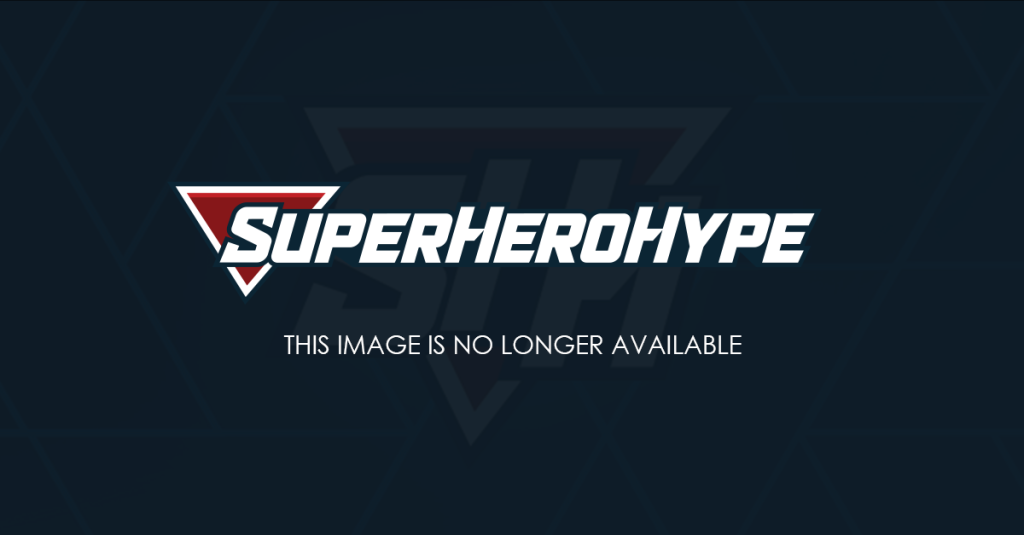
CS: At the Comic-Con Q&A following the short’s premiere there was a question about Hayley Atwell potentially reprising her role on “Agents of S.H.I.E.L.D.” I couldn’t help but notice that that question came from Marvel Studio’s Victoria Alonso.
D’Esposito: (Laughs) Her and her big mouth! She’s a strong female character, Victoria Alonso, also.
Winderbaum: She’s our personal Peggy Carter.
D’Esposito: She’s Hayley Atwell, Gwyneth Paltrow and Scarlett Johansson all rolled into one. Listen, there’s obviously a drumbeat that is banging louder and louder that we want a female lead superhero. We didn’t consciously set out to make a female lead superhero. It just happened that in our last two shorts, the protagonists were female. I just hope we found the best story possible.
Winderbaum: With “Item 47,” we didn’t think about it at all. We were just going, “A couple finds a weird alien gun and goes on a bank robbing spree!” We didn’t know it was going to be Lizzy Caplan.
D’Esposito: We always knew that the Lizzy Caplan character was the lead of that. That was more of an ensemble. It’s obvious that Hayley Atwell is the lead in this. Maybe that’s Victoria manipulating us behind the scenes!
CS: Speaking as a fan who reads too much into things, I couldn’t help but notice that the bar in “Agent Carter” is called Nelson’s. That’s not a reference to Foggy Nelson in any way is it?
D’Esposito: (Laughs) Oh, geez. That’s a reference to a joke. A dirty joke that I can’t tell you. So yes, you’re reading into it. And now I’m blushing.
CS: Are you interested in making the transition to directing features?
D’Esposito: It’s certainly a different muscle you’re using. Not completely, but a little bit. I love it. I love storytelling. That’s why I got into this business. Well, I got into this business accidentally, but what kept me there and what fueled my passion for it is storytelling and the tools you have for it. The camera and the actors and the script, obviously. Maybe. I talk about it with Kevin [Feige] seriously. We’re quite busy right now. We have three films coming out in the next eight months and we’re in prep on two others. It’s hard to have that serious conversation when you have so much on your plate. It is a conversation we have had. I am definitely going to do another short. We’re not sure when, but there’s an idea we’ve been kicking around that we want to do. We’ll see. We’ll take it from there.
CS: Do the shorts allow you to sort of test the waters for something like a female-led superhero film?
D’Esposito: Well, if it was a test, it has been 100 percent successful. There seems to be a need and a want and a desire for one. Once again, we have strong female characters in our films from Black Widow to Pepper Potts to Peggy Carter and you never know. Maybe there’s an offshoot film with one of them. Or Captain Marvel, you know? It’s hard though, because we have a small group at Marvel. We do two films a year. To get those two films done and to do them right takes a lot of work and manpower. And female-power, obviously. To put another film in the slate is difficult. We have these next three, four, five films coming out. That’s what we’re really concentrating on.

CS: Can you talk a little about how the cast for “Agent Carter” came together. There’s a number of interesting guest-appearances, including even Shane Black as a voice.
D’Esposito: So, first and foremost, Hayley Atwell. We called her up. “Are you available? Are you interested?” We sent her the script. She didn’t realize she’d have so much fighting in it. “Yeah, I want to do it. It’s great.” So she’s on board. Then we started casting like we do on any of our films. We go through our casting director Finn. She reads the script. I explained to her some of the things we’re looking for and she send over a list, just like if we’re doing a feature. We went after Bradley Whitford immediately. We knew we wanted him. There were some scheduling issues. It was touch and go and then he finally became available. So we jumped that hurtle and it was great. Dominic Cooper was also touch and go for awhile. He was going to actually be in the office and actually walk into the office. He couldn’t be there on the day. A couple of weeks later he became available and that’s when we decided to do it as a phone call. Dum Dum Dugan was, at one point, going to come in the office with Howard Stark. When that couldn’t to fruition, we added the tag scene. These things are very planned out when we do them. Every line of the script and every shot. Every visual effect. That was one where we sort of ad-libbed it and had some fun.
CS: Is there any thought of bringing the “One-Shot” shorts to theaters?
Winderbaum: We want to do it. We’ve always wanted to do it. It’s more a matter of justifying it.
D’Esposito: This one is a little long, I think. With credits, it’s 15 minutes. Pixar has been doing it with six minutes or five minutes. People really want to see it and it has crossed our mind. We just need to find that place where we can justify the length to put it in front of a movie and people are going, “Come on with the movie already!”
Iron Man 3 is now available on DVD, Blu-ray and for Digital Download.
